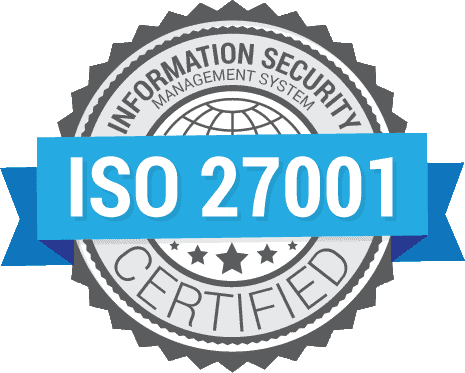The role of network architecture in ensuring seamless connectivity and performance
When you think about the digital backbone of a business, network architecture stands at the centre of everything. Without a well-structured foundation, your applications load slowly, your cloud services become unstable, and collaboration between teams breaks down. If you want your business to run smoothly, you need to look at network architecture as more than just cables, routers, and switches. It’s the framework that brings order to complexity, the system that dictates how fast data flows, and the reason your customers and employees experience stability instead of frustration.
A well-planned architecture saves you money, reduces downtime, and keeps your company competitive. If you invest in performance and scalability from the start, you won’t just avoid problems, you’ll create opportunities to grow with confidence.
Why network architecture defines connectivity
Connectivity isn’t just about “being online.” It’s about how well your infrastructure supports continuous communication. A strong network architecture ensures that every component works in harmony: your servers talk to each other without delay, your applications reach the cloud instantly, and your remote teams stay connected without interruptions.
When you rely on a structured approach, you eliminate bottlenecks. For example, a business with a flat network design may experience slow data transfer when many employees work simultaneously. By contrast, a layered design, tailored to workload distribution, guarantees smooth performance.
Key outcomes of robust network architecture
Reduced latency across applications and devices;
Reliable access to cloud and hybrid environments;
Stable connections for remote and distributed teams;
Higher resilience against congestion and overload.
If your business depends on uninterrupted collaboration, a carefully built network isn’t optional, it’s the foundation of your daily operations.
Performance as the natural outcome of structure
When you architect your network strategically, performance becomes predictable. Instead of reacting to failures, you control how data flows. Features such as Quality of Service (QoS), bandwidth management, and traffic prioritization allow you to optimize resources according to business needs.
Take video conferencing as an example. Without prioritization, calls drop when your file servers handle large uploads. With an intelligent architecture, you set rules that keep voice and video traffic stable, no matter the background activity.
Performance also depends on scalability. As your company grows, you need to add devices, expand storage, and integrate cloud platforms. A poorly designed network collapses under the pressure. A scalable architecture, however, adapts seamlessly to new demands while keeping operational costs under control.
Security as part of the design
You can’t separate performance from security. A network that runs fast but exposes vulnerabilities doesn’t serve your business. Security must live inside the architecture, not as an afterthought.
By embedding firewalls, VPNs, intrusion detection, and access controls into the network structure, you protect sensitive data while keeping communication efficient. For example, segmenting your network ensures that a potential breach in one area won’t compromise your entire infrastructure.
Security-focused architecture also reduces compliance risks. If your company works under strict standards such as ISO 27001 or GDPR, your network design must reflect them. Instead of facing penalties or downtime, you maintain operational continuity and client trust.
Supporting cloud and hybrid environments

Modern business don’t live in a single data centre anymore. You likely rely on cloud services for collaboration, storage, and application hosting. Without a network architecture that supports hybrid integration, you face constant delays and compatibility issues.
A strong design ensures seamless transitions between on-premise and cloud resources. For example, if your team runs workloads in AWS while keeping sensitive databases locally, you need optimized routing and secure tunnels to connect both worlds.
Benefits of cloud-ready architecture
Fast access to SaaS platforms and collaboration tools;
Secure connections between private and public environments;
Flexibility to move workloads as business needs evolve;
Cost optimization by balancing local and remote resources.
By supporting hybrid environments, you ensure your company stays agile without sacrificing control.
Cost-efficiency through smart planning
Every IT manager knows how quickly expenses can spiral out of control when networks are poorly managed. A carefully planned architecture not only prevents downtime but also cuts operational costs.
For instance, automation tools reduce repetitive manual work. Instead of spending hours configuring devices, you rely on scripts that apply changes consistently. Similarly, centralized monitoring eliminates the need for multiple vendors and overlapping systems.
At ITcare, clients often reduce operational expenses by 60–70% thanks to optimized workflows and lean support models. When you treat architecture as a long-term investment, you gain efficiency, lower costs, and more predictable budgeting.
Partnering with experts for sustainable growth
Building and maintaining robust network architecture requires certified expertise. By working with professionals who understand routing, security, automation, and hybrid integration, you avoid costly mistakes.
When you collaborate with a partner like ITcare, you gain access to:
certified engineers in Cisco, Juniper, Linux, AWS, and Kubernetes;
ISO 27001–aligned practices that guarantee security and compliance;
24/7 monitoring with rapid response to incidents;
tailored architecture that adapts to your growth trajectory.
Instead of managing complexity alone, you benefit from structured solutions that keep your business competitive.
Your network architecture isn’t just infrastructure, it’s the silent partner that enables everything else. From fast file transfers and reliable video calls to secure cloud access and reduced expenses, every aspect of performance depends on the way you design and maintain your network.
If you want stability, scalability, and cost control, you need to treat architecture as a strategic priority. Don’t wait for downtime or security breaches to force change. Take control now, design your network with purpose, and create a digital environment where performance and connectivity work together seamlessly.
Ready to improve your network performance and reliability? Partner with ITcare today and build the architecture your business truly deserves.







